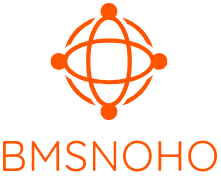Table of Contents
ToggleIn a world where the news cycle spins faster than a caffeinated hamster on a wheel, global public affairs has become the unsung hero of modern communication. It’s not just about managing crises or spinning narratives; it’s about bridging gaps between governments, businesses, and the public. Imagine a stage where the stakes are high, and the spotlight never dims—this is where global public affairs strut their stuff.
As issues like climate change and international trade swirl in the global arena, effective public affairs strategies can mean the difference between chaos and collaboration. It’s a dance of diplomacy, and those who master it can sway opinions, shape policies, and even save the planet—one press release at a time. So buckle up; understanding global public affairs isn’t just important—it’s essential for anyone who wants to stay ahead in today’s interconnected world.
Understanding Global Public Affairs
Global public affairs encompasses strategies and actions that shape policies and influence public opinion on a global scale. This field plays a vital role in fostering collaboration between governments, corporations, and citizens to tackle complex international challenges.
Definition and Scope
Global public affairs refers to the practice of managing communications and relationships among various stakeholders on a worldwide level. It encompasses areas such as diplomacy, corporate social responsibility, and advocacy. Practitioners focus on crafting narratives that resonate across diverse cultures and political systems. Issues like climate change, public health, and international security fall within its scope, making it essential for organizations to navigate these domains effectively.
Importance in Today’s World
Understanding global public affairs carries significant weight in today’s interconnected landscape. Organizations leverage public affairs strategies to enhance their influence and address global challenges such as poverty and inequality. Effective communication fosters trust and collaboration among stakeholders. By managing perceptions and engaging with the public, entities can advocate for policies that reflect shared values and address pressing global issues.
Key Players in Global Public Affairs

Effective global public affairs hinges on collaboration among various stakeholders. The landscape features key players such as governments, international organizations, NGOs, and the private sector.
Governments and International Organizations
Governments play a crucial role in shaping public policies that reflect national interests. International organizations, like the United Nations, facilitate cooperation between nations, promoting peace and sustainable development. Political leaders leverage diplomatic channels to address crises and negotiate treaties. They provide essential frameworks for tackling global challenges—such as climate change and health crises—by coordinating efforts and resources. Ministries engage in public engagement tactics that enhance transparency and foster trust among citizens and stakeholders.
NGOs and Private Sector
NGOs add significant value to global public affairs through advocacy and grassroots initiatives. These organizations highlight social issues, influencing policy changes and raising awareness. Collaboration between NGOs and the private sector often amplifies impact, driving corporate social responsibility initiatives that meet community needs. Businesses, on the other hand, utilize public affairs strategies to navigate regulatory environments and enhance brand reputation. They engage with stakeholders to ensure alignment with societal values, demonstrating their commitment to sustainable practices and ethical governance. Together, these entities create a dynamic ecosystem enabling progress on pressing global matters.
Challenges in Global Public Affairs
Global public affairs face numerous hurdles that impact their effectiveness. Geopolitical tensions frequently complicate diplomatic relations and collaboration among nations. Various conflicts often shift priorities and result in unpredictable policy outcomes. Countries may engage in trade wars or alter alliances, undermining collective efforts to address shared issues. In such scenarios, public affairs professionals must navigate changing landscapes and adapt strategies swiftly.
Communication barriers present another significant obstacle. Cultural differences often hinder effective dialogue among stakeholders. Misunderstandings can arise from language discrepancies or varying communication styles. These barriers complicate the development of cohesive narratives that resonate across borders. Organizations also struggle with inconsistent messaging due to diverse political contexts. Crafting targeted communications that appeal to multiple audiences requires careful consideration and expertise to bridge these gaps.
Strategies for Effective Global Public Affairs
Implementing effective global public affairs strategies hinges on building relationships and leveraging technology.
Building Relationships and Networks
Establishing strong relationships among stakeholders fosters collaboration. Investors, policymakers, and community leaders must engage regularly. Regular networking helps create trust and ease communication barriers. Assigning dedicated liaison teams can deepen connections with governments, NGOs, and the private sector. Building alliances among influencers promotes a unified voice on critical issues. Immediate feedback loops enhance responsiveness to stakeholder concerns. Emotional intelligence plays a role in understanding needs and expectations of diverse audiences. Tracking engagement metrics allows organizations to assess relationship health and adjust strategies accordingly.
Leveraging Technology for Communication
Utilizing technology maximizes reach and impact in global public affairs. Digital platforms enable real-time communication across geographic boundaries. Data analytics can guide targeted messaging campaigns, ensuring relevance for various audiences. Video conferencing tools facilitate direct interactions, fostering stronger connections among global stakeholders. Social media serves as a powerful tool for disseminating information quickly and efficiently. Engaging content attracts attention and encourages sharing, amplifying the reach of key messages. Mobile applications can streamline communication, making vital information accessible anytime, anywhere. Organizations that adapt to evolving technology trends position themselves as leaders in global public affairs.
Global public affairs stands as a cornerstone in navigating today’s complex international landscape. Its significance transcends mere communication strategies; it’s about fostering collaboration among diverse stakeholders to tackle urgent global challenges. As organizations recognize the need for effective public affairs, they enhance their ability to influence policies and shape public opinion.
The interplay between governments, NGOs, and the private sector creates a vibrant ecosystem that drives progress. By embracing technology and prioritizing relationship-building, entities can overcome barriers and craft compelling narratives that resonate across cultures. As the world becomes increasingly interconnected, the mastery of global public affairs will be crucial for those aiming to effect meaningful change.







